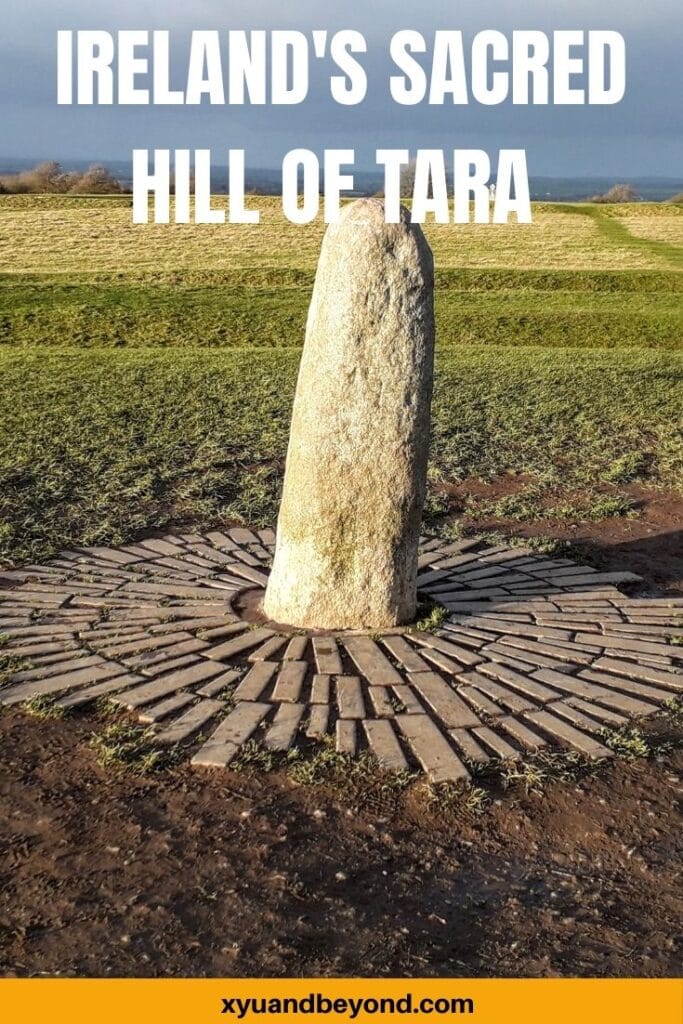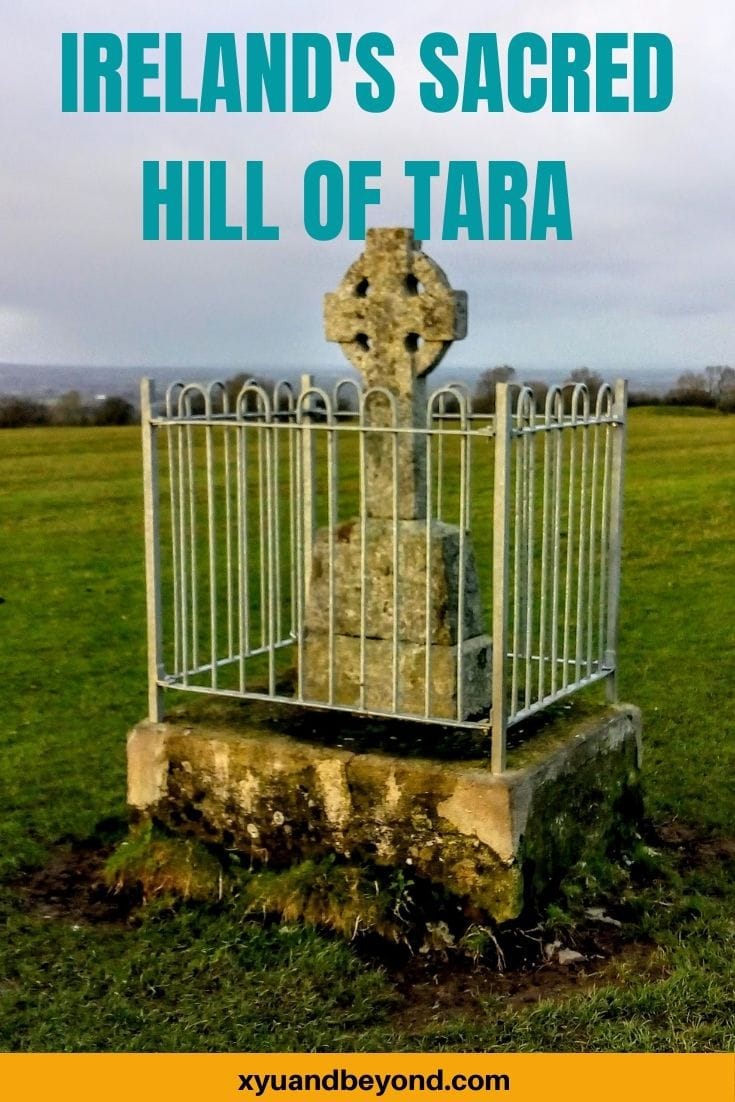Visiting the Mystical Hill of Tara Ireland in Meath
One of the most revered and ancient historical sites in Ireland is the Hill of Tara located in County Meath, Ireland’s Ancient East and the Irish seat of the High Kings. It is a huge site that is continually being investigated archaeologically. Tara encompassed the Rath of the Synods, The Mound of the Hostages and the Stone of Destiny or the Lia Fáil. This is one of the top attractions in Ireland and one of its incredible ancient monuments.
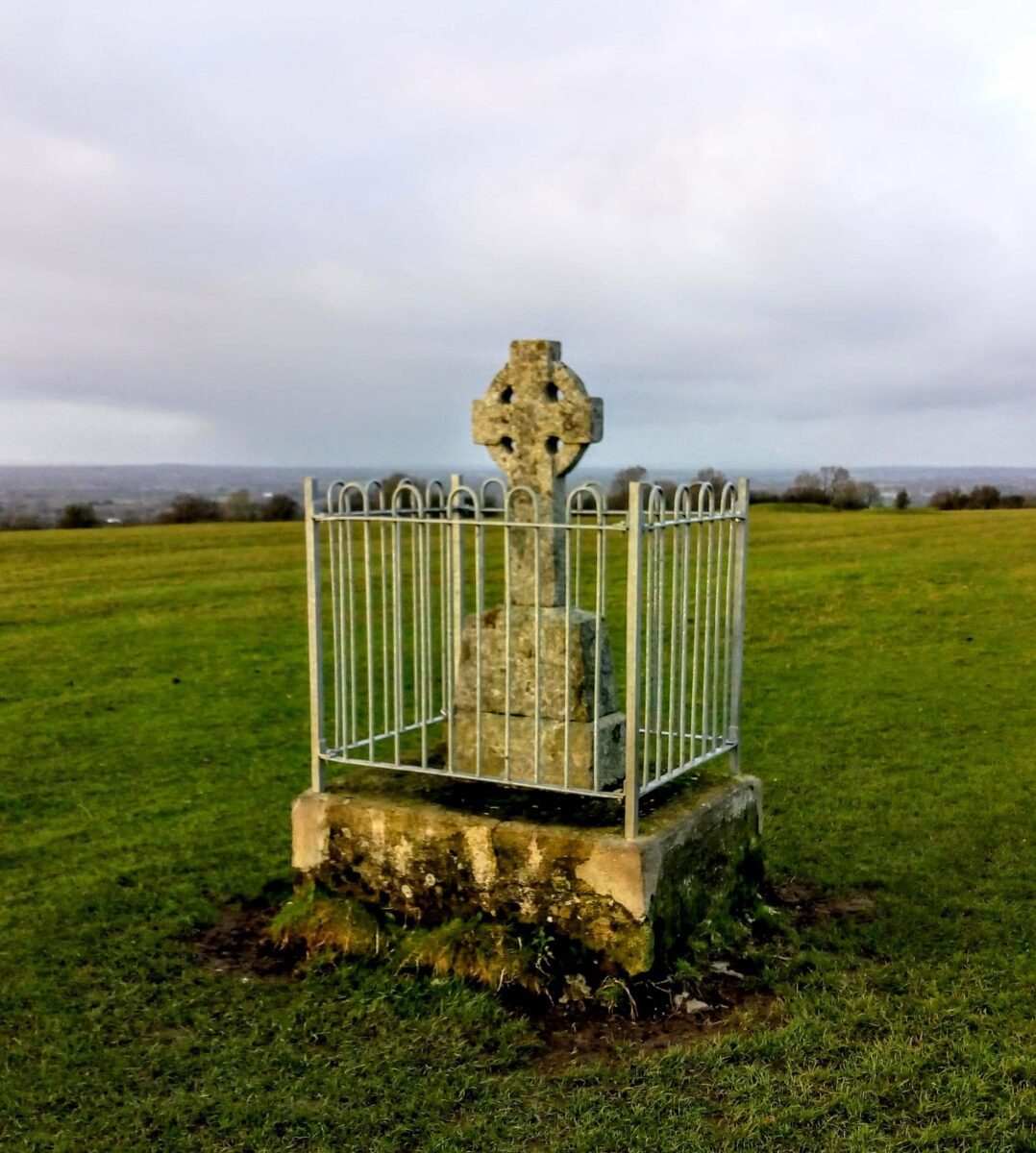
The Hill of Tara, known as Temair in Gaeilge, was once the ancient seat of power in Ireland – 142 kings are said to have reigned there. In ancient Irish mythology, Temair was a sacred place for the gods and was the entrance to the otherworld. Saint Patrick is said to have come to Tara to convert the pagans to Christianity.
Where is Tara Ireland? The Hill of Tara is located near the River Boyne, it is an archaeological complex that runs between Navan and Dunshaughlin in County Meath, Leinster, Ireland.
When was the Hill of Tara built? The Hill of Tara dates back to the late stone age when a passage tomb was built there. The site became truly important by the Iron Age which was from 600 BC to 400AD and up into the early Christian period when it became the seat of the High Kings of Ireland.
Why was the Hill of Tara built? Legend has it that the Fir Bolgs, the race that lived in Ireland before the invasion of the Tuatha De Danaan, were the first to build at Tara to inaugurate kings there.
There is a church and graveyard on the hill. Tara forms part of a larger ancient landscape and Tara itself is a protected national monument under the care of the Office of Public Works.
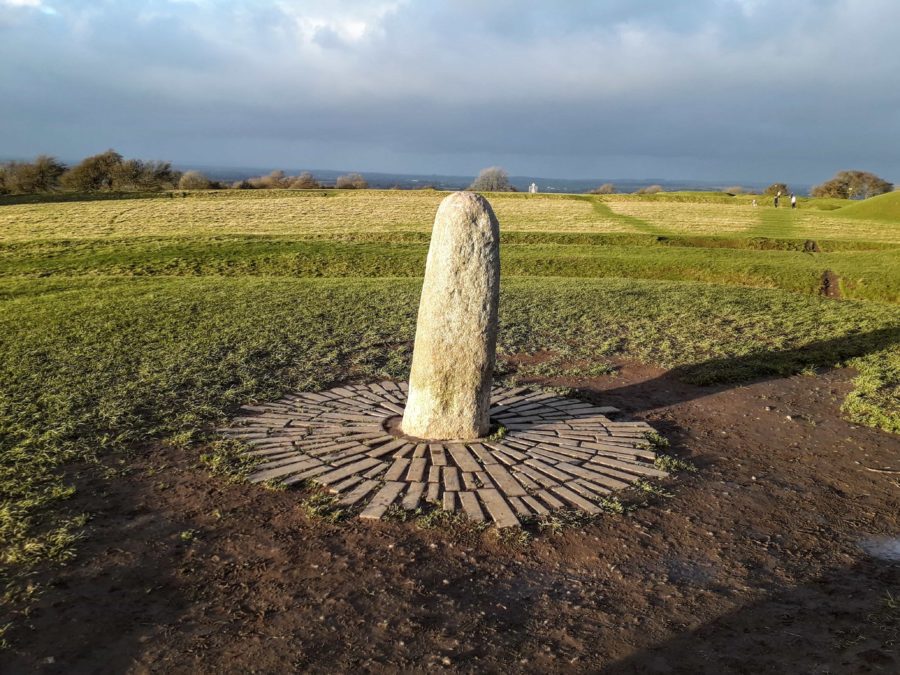
Xyuandbeyond is reader-supported. When you buy through links on our site, we may earn an affiliate commission. You can read my privacy policy here.
The site of Tara, it has been discovered, has revealed a huge wooden henge, said to be even bigger than Stonehenge and quite possibly be the size of a football stadium, meaning it would have been seen on the skyline for many miles around.
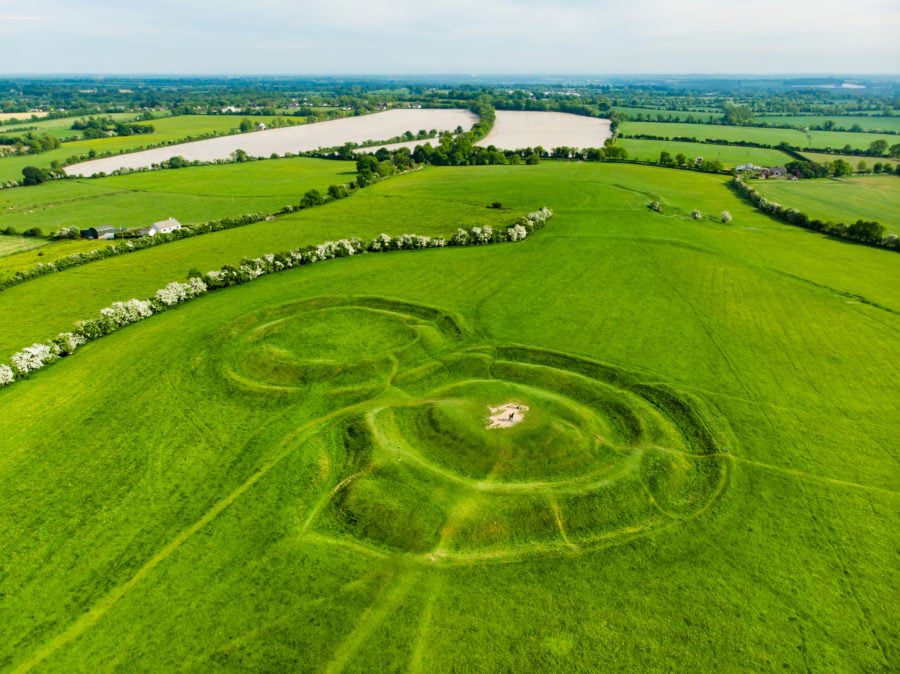
It is haunting being surrounded by this landscape and these megaliths, something this old full of legends and myths reminds us of why we visit Ireland.
Hill of Tara mythology
Tara is often referred to as the mythical and ceremonial heart of Ireland and has been compared to the pyramids in Egypt and Stonehenge or Avebury in England. to England’s Stonehenge and Egypt’s pyramids. The site is associated with Celtic gods such as Lub and the goddess Medb. Tara was believed to be the entrance to the other world.
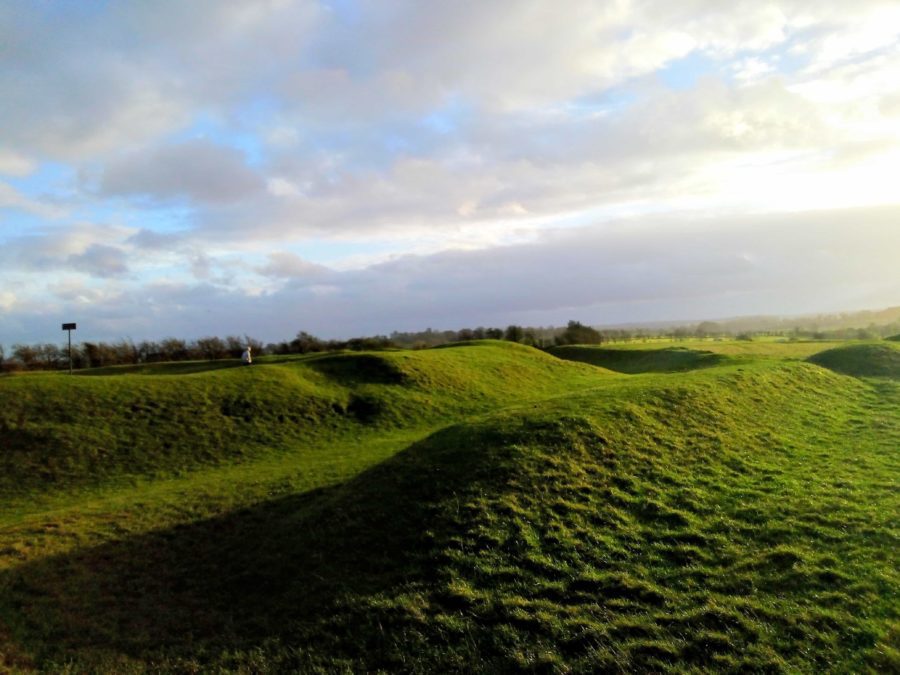
One of the legendary High Kings of Celtic Ireland was named Niall of the Nine Hostages in recognition of the fact that he held hostages from all the provinces of Ireland and from Britain.
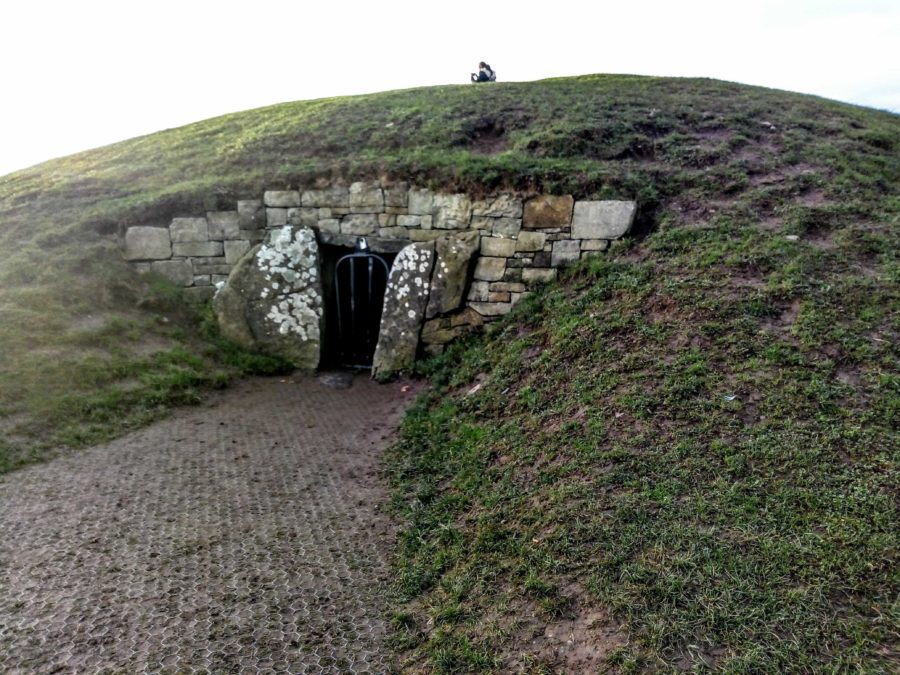
The concept of the High Kingship of Tara encompasses both a historical and legendary notion of revered kingship in ancient Ireland. Holding the esteemed title of King of Tara bestowed upon its holder significant authority and prestige. It was common for numerous Irish High Kings to also hold the position of Kings of Tara. This particular title began to emerge during the periods of the ninth and tenth centuries.
Between 1899 and 1902, a self-proclaimed collective known as the British Israelites undertook a series of unprofessional excavations at Rath na Seanadh, also known as The Rath of Synods. Their misguided belief stemmed from myths and legends that drew tenuous connections between the Bible, Egypt, and Ireland, leading them to mistakenly conclude that the Ark of the Covenant was buried at this site. It is likely that these narratives were fabricated by early Irish monks to establish links between biblical accounts and Ireland’s ancient history.
How to get to the Hill of Tara
The Hill of Tara is 5 km north of Dunshaughlin, just off the R147 (formerly N3, Dublin-Navan road).
By car from Dublin: If you have rented a car and are driving from Dublin take the R147 to the Boyne Valley. At junction 7, take the R147 exit to Skryne/Johnstown. At the roundabout, take the 1st exit onto R147. Take a right at the sign for the Hill of Tara. Continue up the hill until you reach your destination on the left. The Hill of Tara is in Castleboy in County Meath and it is around 30 minutes from Newgrange and 20 minutes from Trim.
Public transport: Bus Eireann’s Navan bus 109 will leave you on the main R147 road, about 10 minute walk from Tara. (Check other Bus Eireann routes here)
What to see at the Hill of Tara – the Monuments at Tara
Hill of Tara tickets? Access to the Hill of Tara is free of charge, and open all year round. Please see the Heritage Ireland website for visitor centre opening hours. Audio-Visual presentations and guided tours are available during the summer months.
Hill of Tara Map
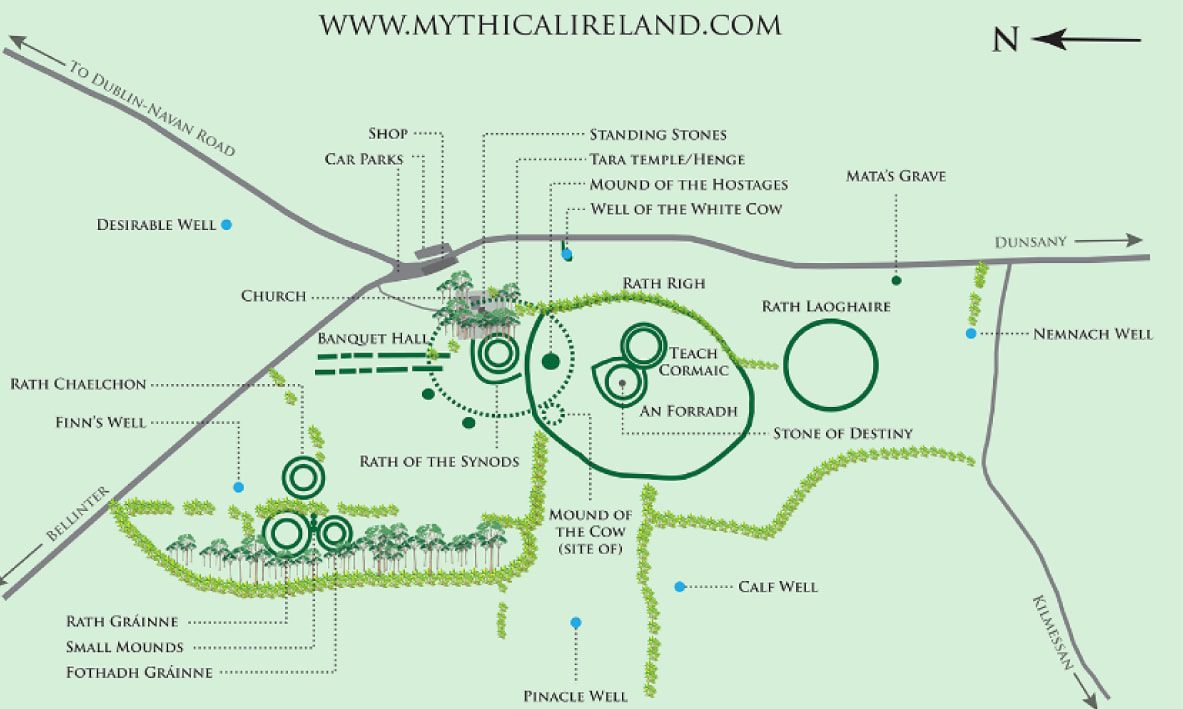
Lia Fáil – Hill of Tara Stone of Destiny
According to legend and Mythical Ireland the Lia Fail or “Stone of Destiny” was brought here by, the Tuatha Dé Danann, as one of their sacred objects. It was said to roar when touched by the rightful king of Tara. This is where the High Kings of Ireland were crowned. It is believed that the stone originally lay beside or on top of the Mound of the Hostages. Lia Fáil, is also known as the Coronation Stone or Stone of Destiny, was an important ritual component in the coronation of ancient High Kings of Ireland.
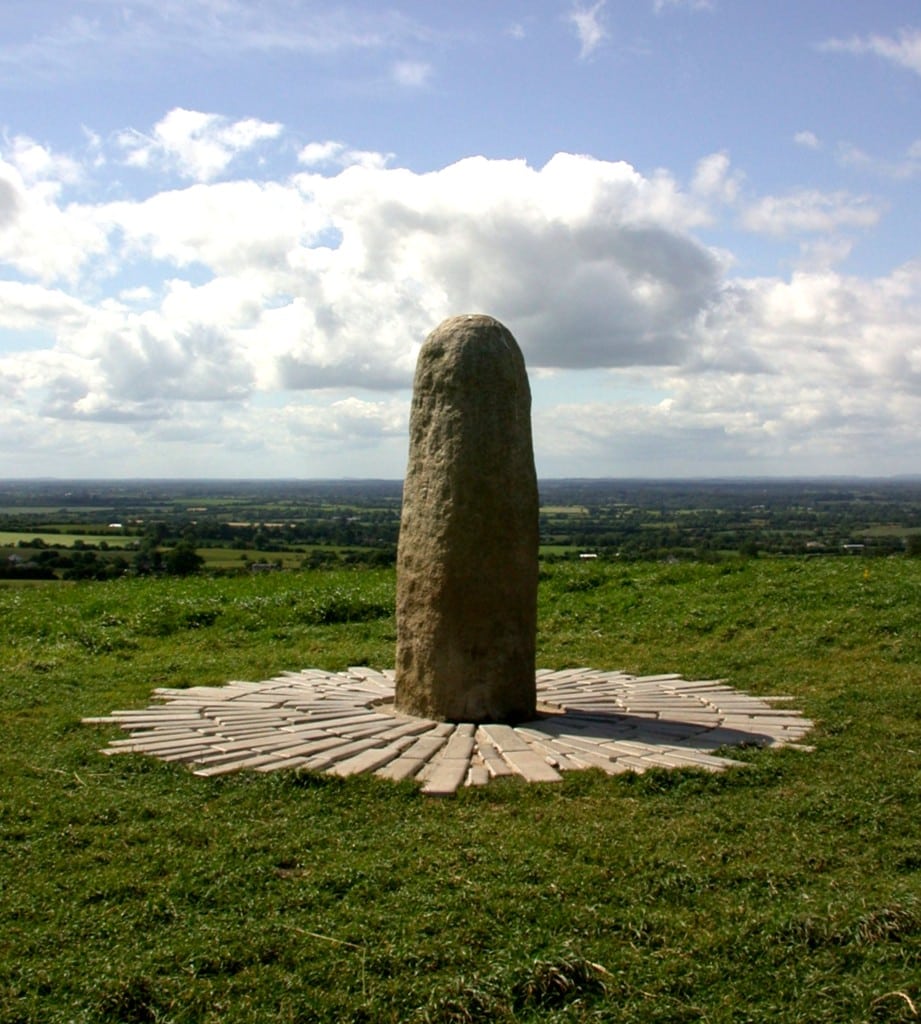
Mound of Hostages
How old is the Hill of Tara? Tara was an important site long before the High Kings. A passage tomb known as Dumha na nGiall (meaning ‘the mound of the hostages’) is the oldest visible neolithic monument and dates from around 3,000 BC.
The “Mound of the Hostages” is a megalithic ‘passage tomb’ like Newgrange and is the oldest monument on the hill, and one of Ireland’s most famous historical sites dating to around 2,500BC. The name “Mound of the Hostages” comes from the custom of Kings keeping important people or family members from other royal families as hostages to ensure that the families followed the King’s rule.
Banqueting Hall
Tara possesses a distinctive attribute in the form of a rectangular earthwork, spanning 230 meters by 27 meters along a north-south alignment. According to tradition, this structure was constructed to accommodate a multitude of guests during grand feasts held at Tara, this became known as the Banqueting Hall.
The orientation of this earthwork implies that it served as a sunken entrance to Tara, providing direct access to the Royal Enclosure. Recent investigations, however, have revealed the presence of graves within the enclosure. This intriguing discovery raises the possibility that the earthwork’s banks might actually serve as burial grounds for certain kings of Tara.
Hill of Tara fairy tree
A fairy tree in Ireland is usually a Hawthorn tree or an Ash tree. The trees can be spotted as they stand alone and are usually surrounded by large stones to protect the tree. No one is ever sure about how the stones got there but they are not to be moved as it would cause the fairies to take their revenge.
You can spot the trees looking for ones that stand alone and are covered in small rags and tokens. These are left there in the hope that the fairies will grant the wishes of the person who hung the item. Sadly one of the trees at Tara has fallen over due to the weight of some items and other trees are suffering from items tapped into the trunks like coins which are poisoning them.
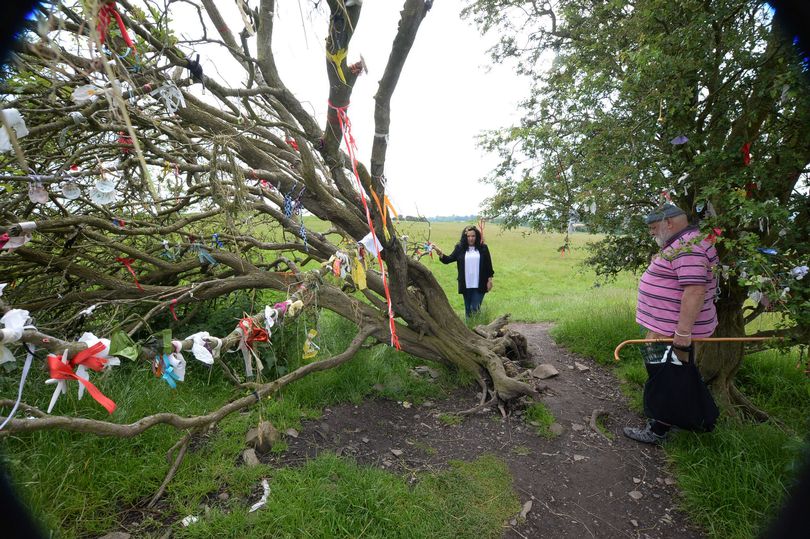
St. Patrick’s Church
In the churchyard at Tara, there are two standing stones, which are believed to be quite ancient. Saint Patrick’s, is on the eastern side of the hilltop. The “Rath of the Synods” was partly destroyed by the building of its churchyard. The church you see today was built in 1822–23 on the site of an earlier one.
The earliest evidence of a church at Tara is a charter dating from the 1190s. In 1212, this church was “among the possessions confirmed to the Knights Hospitallers of Saint John. A 1791 illustration shows the church building internally divided into a nave and chancel, with a bell tower over the western end. A stump of wall marks the site of the old church today, but some of its stonework was re-used in the current church. The building is now used as a visitor centre operated by the Office of Public Works.
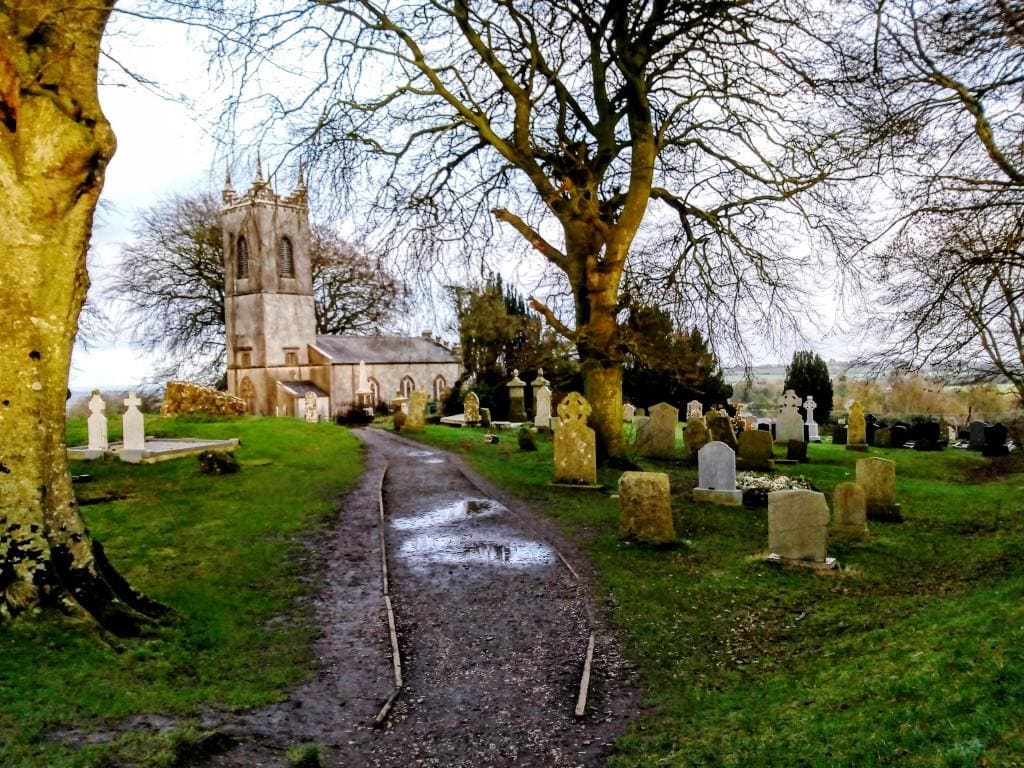
The taller of the two stones is thought to feature a figure of the Celtic fertility god Cernunnos and is similar to many of the ‘Sheela na Gigs found across Ireland.
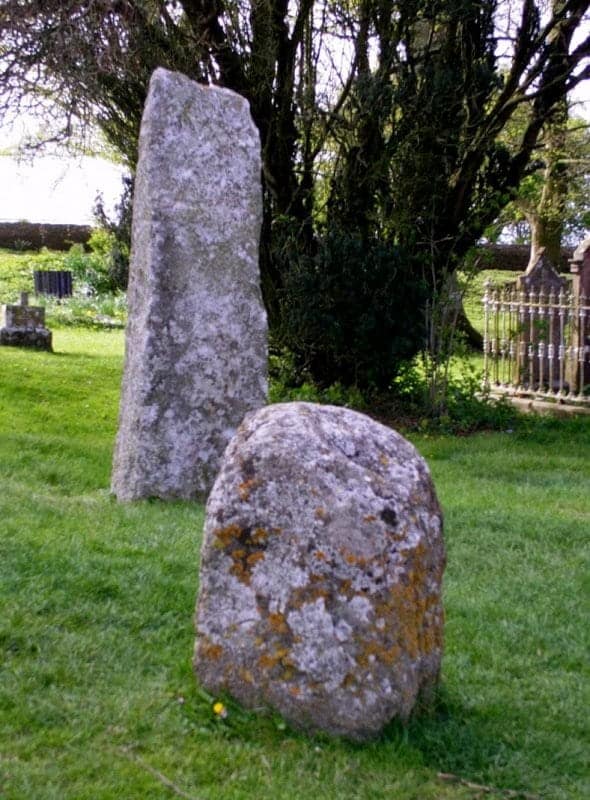
Massive Temple found under Hill of Tara
Directly beneath the Hill of Tara a massive temple was discovered by archaeologists. Huge posts numbering around 300 surrounded the temple. What was eventually discovered was on the crown of the hill of Tara there was a substantial oval-shaped monument measuring nearly 200 metres wide. It is believed that the monument dates from 2500 to 2300BC. Located just below the ground surface there are no existing plans to dig it out.
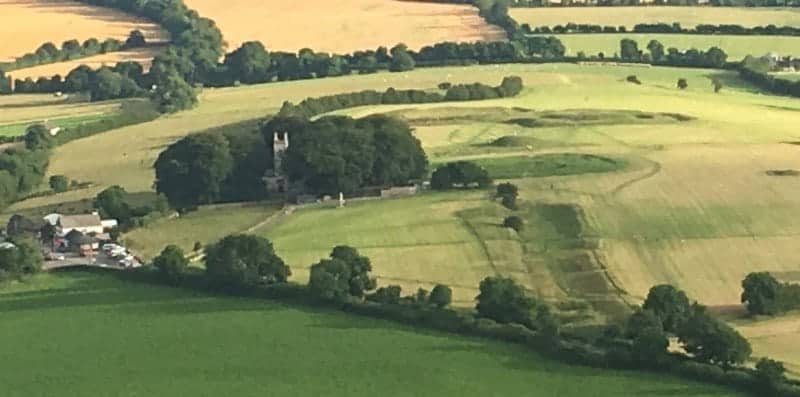
Since the Hill of Tara is located near the River Boyne In the Boyne Valley add a stop to your visit and go and see the site of the Battle of the Boyne one of Ireland’s legendary battles. You should also take the opportunity to visit Monasterboice and Kells, both of which are historic sites with stunning Celtic Crosses.
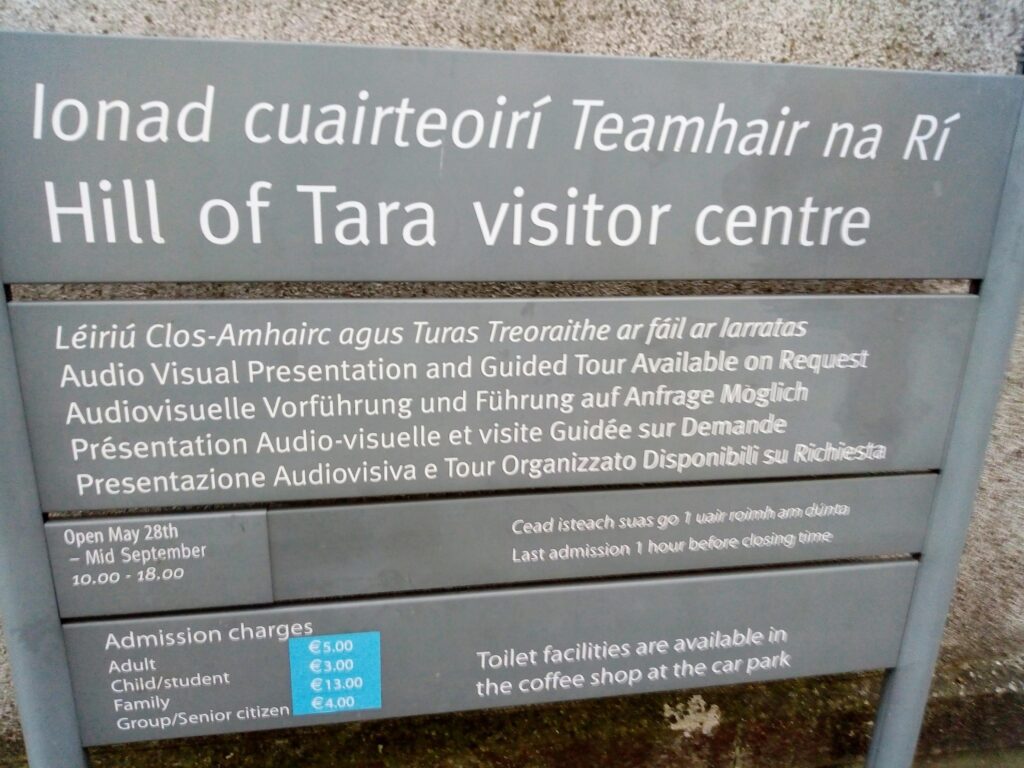
Tickets to visit the Hill of Tara
The cost of entry to the Hill of Tara is free but if you want a fantastic guided tour you can arrange that from the Visitors Centre which is the Church located on the walk up to the Hill. The cost of the tour is for Adults: €5.00 and for children €3.00.
Hill of Tara Gift Shop & cafe
At the Hill of Tara, you will enter a parking lot where you will find a lovely cafe and the Hill of Tara gift shop where you can buy your tickets and souvenirs. There is a parking lot here and a small cafe with facilities and a gift shop.
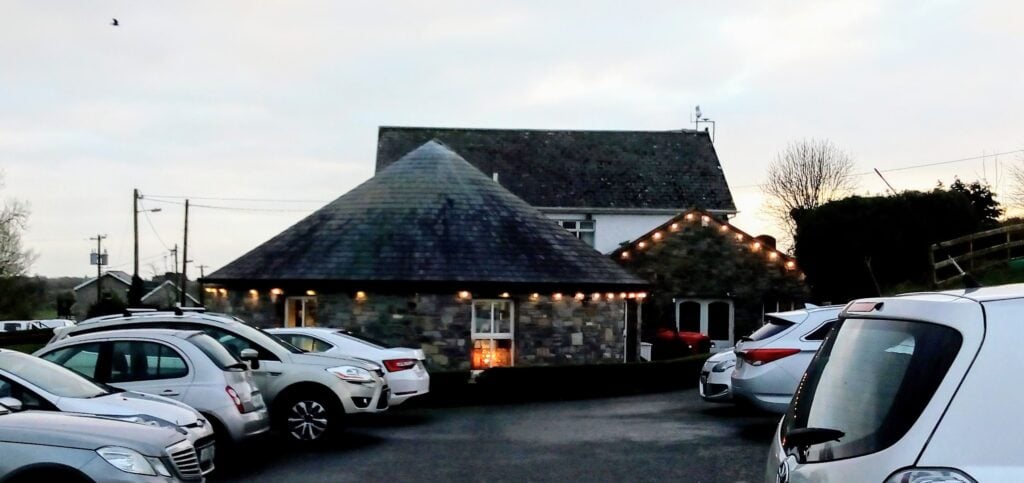
The Tara Brooch meaning
Contrary to popular belief the Tara Brooch was not found at the Hill of Tara but on a beach near Bettystown not far from Drogheda in 1850. It was called the Tara Brooch by a jeweller who bought it and used the name as a marketing tool for the copies they made for tourists.
The brooch has nothing to do with the Hill of Tara, where the High Kings of Ireland resided. George Waterhouse, who was making Celtic jewellery in Dublin which became popular in the 1800s named it The Tara Brooch to make it more marketable. Waterhouse made it the centrepiece of the displays at his Dublin shop, where he sold replicas of jewellery featuring Celtic designs. He also presented the Tara Brooch at The Great Exhibition in London in 1851 and sent it to Queen Victoria to inspect at Windsor Castle, and then showed it at the Paris Exposition Universelle in 1855.
Where is the Tara brooch kept? The Tara Brooch is now in the National Museum of Ireland in Dublin.
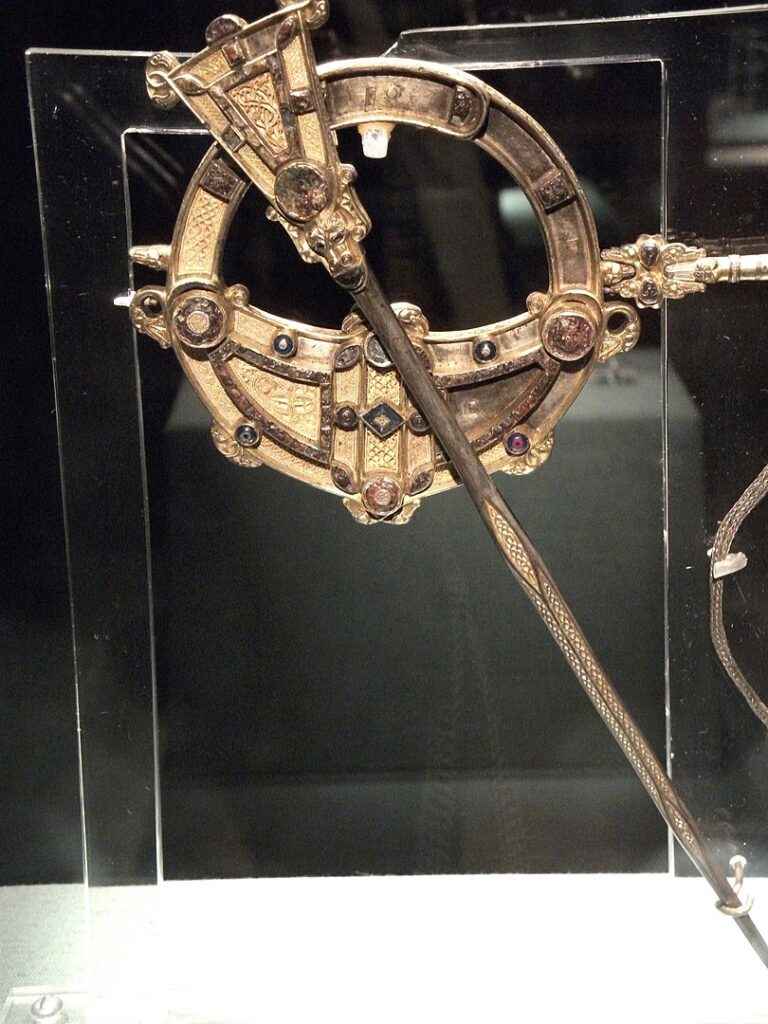
You can of course buy Tara replica brooches all over Ireland. I love a brooch or a pin whatever you want to call it and I do love this Tara Brooch it’s silver-plated and it contains amber and glass beads.
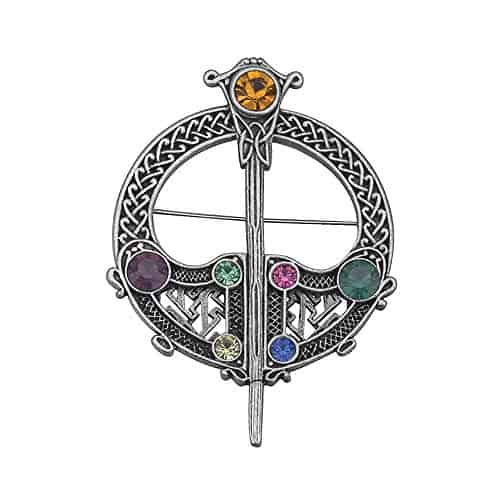
The Hill of Tara in Ireland is a must-visit destination for anyone interested in ancient history and Celtic mythology. Visitors can explore the ancient earthworks and monuments, including the Stone of Destiny, which was said to roar when touched by the rightful king. The stunning views from the top of the hill are also not to be missed. Overall, a visit to the Hill of Tara is an unforgettable experience and a fascinating glimpse into Ireland’s rich past.
Have you visited Ireland yet? What was your favourite place to visit?
You might also like
The Celtic Cross – an iconic symbol of Ireland
Ireland’s Ancient East – an epic road trip
Ancient Ireland 30 sacred places
Pin it to save it
